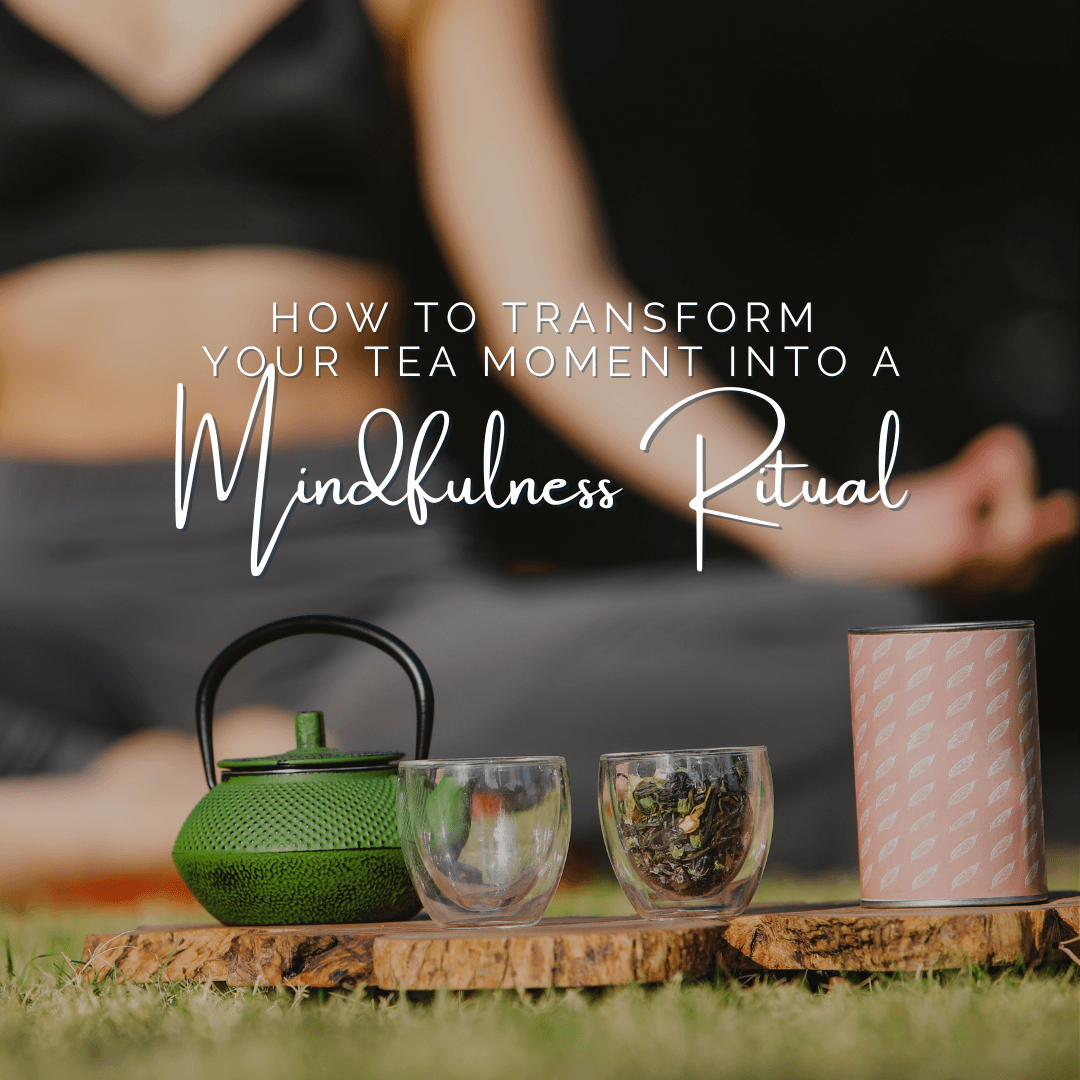How to transform your Tea Moment into a Mindfulness Ritual
Mindfulness is a term that has gained popularity in recent years and is increasingly on the rise among wellness trends. Mindfulness is a set of techniques or practices that help you into a state of full attention. Basically, it’s the ability to be aware of the present moment without distractions.
In this post, you learn how to transform your tea break into a mindfulness ritual.
If this takes your interest, you might also like to discover new ways to relax and connect with yourself in this free and exclusive 7 day tea meditation journey.
Have you ever stopped to think about how many things in your day you do automatically, almost without thinking? Waking up, brushing your teeth, drinking coffee, driving, talking to someone, performing a task.
It's as if we save energy to get things done in such a trivial way, that many times our thoughts are completely distant from the task we are performing at that moment.
About 47% of the time, we do things automatically. As a result, our brain tends to stop evolving over time, affecting many aspects of our organism.
What is mindfulness?
Contrary to what many people believe, mindfulness does not mean not thinking about anything. It's simply a moment when your full attention is on the present. A moment where you are able to observe your thoughts without being dominated by them.
When you are fully attentive, you can focus on what you're doing without being distracted by external factors. You can also be aware of your movements, thoughts, and surrounding noise. To put it another way, you are focused on the present moment.
The best known technique for practising mindfulness is meditation, which requires daily practice in order to achieve a state of balance. Nonetheless, small everyday actions, such as making tea, can serve as opportunities to practice mindfulness.
Benefits of mindfulness practice
The neuroscientist Sara Lazar, a professor at Harvard Medical School and a researcher at Massachusetts General Hospital, was one of the first to document the benefits of mindfulness.
At the time, Sara began meditating out of personal necessity and began to notice changes in her daily life.
It was at that point that she began to explore the topic further, and found that practising mindfulness can change the brain's grey matter, thereby expanding it - whereas normally, it shrinks over time - and improving brain areas related to memory, concentration, and emotion control.
Recent research has shown that mindfulness practice has additional benefits, such as self-control, increased productivity, improved well-being, self-compassion and decreased stress levels.
How to apply mindfulness to the tea ritual?
-
Choose the blend according to your needs
Take a moment to pick out a tea that suits your mood that day. You are already doing an important exercise here to gain more awareness of your body and mind by identifying your feelings and needs.
Are you feeling agitated? Why not choose our amazing Chamomile Dream? Did you wake up feeling lazy? Our amazing Be Better Chakra ‘I do’ might do the trick!
Are you experiencing period pains? Then our Blooming is your answer.
-
Choose your favourite mug
Organize the tea accessories you will be using to prepare your tea. Heat the water to the appropriate temperature. Choose your favourite mug or your double glass cup. Notice its shape, its colours, notice the noise the water makes whilst heating.
-
Be present during the preparation
Yes, be present during the tea preparation and avoid distractions. Instead of looking at smartphone notifications or replying to a message, leave electronics off and choose to be fully at the moment. Open the tea packet and smell the aromas of the herbs.
Place them carefully in a container and pay attention. What is the shape of the ingredients? Are they the same size? Do they have the same aromas? Try to understand every detail, noticing every movement.
-
Follow the transformation
Notice the transformation process of the dried herbs coming into contact with water. Do they remain in the same format as before? What has changed? And what aromas can you smell?
Close your eyes and try to go even deeper into the aromas, feeling each note and the movement of your breath.
In case your thoughts quickly shift to another distraction ( which is quite common), take a deep breath and come back to the tea slowly, trying to focus your attention on your body and the drink.
-
Full attention on the cup
Now that your tea is ready, take a few minutes to observe your cup. Feel your fingers holding the body of the object, feel the temperature. Notice how the drink feels, what colour it is, if it is transparent or cloudy, if there are sediments at the bottom of the cup.
Close your eyes and move your attention to your hands and feel. Describe the sensations in your mind. Bring it up to your nose and breathe deeply to feel the richness of the aromas. Listen to the surrounding noise. What is happening?
And if any distractions arise, take a few deep breaths and try to get back to the exercise. Taste the tea and feel the liquor ( infusion) pass through your mouth and travel through your body.
-
Reflect on the experience
Take a few minutes to reflect on the experience. If it was easy or very difficult, what was the biggest challenge and how you can include the technique in your routine.
Start gradually, doing it a few times a week and work your way up, as needed and as you feel like it.
Great things are achieved with small steps forward!
